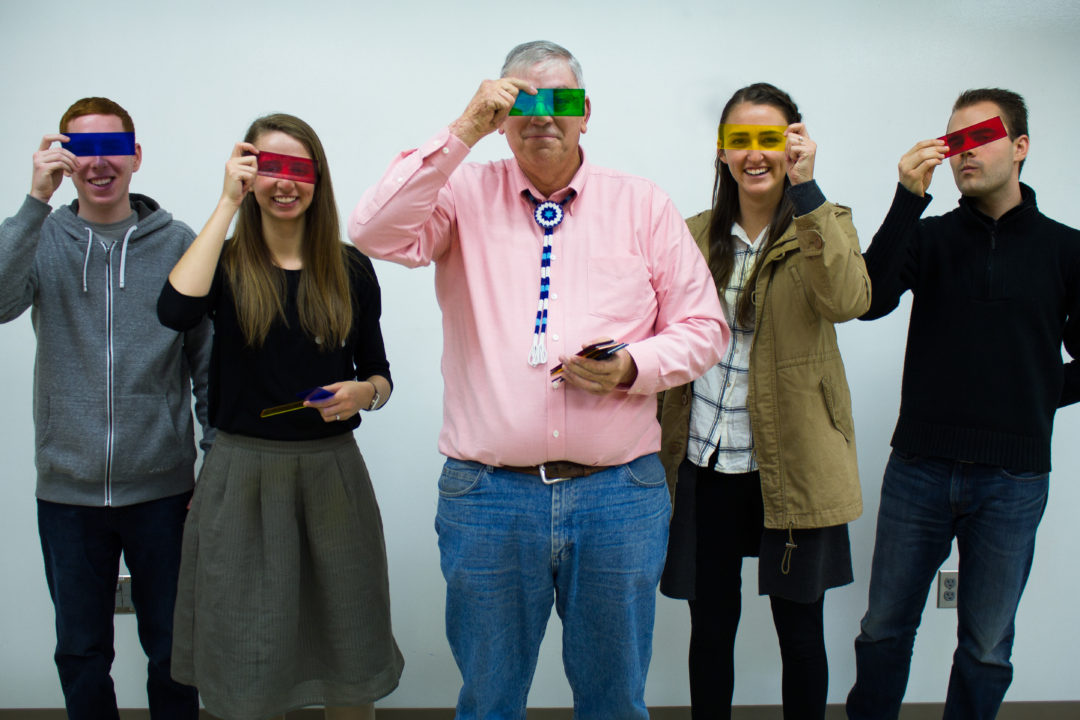
Teaching has always had a huge impact on BYU physics professor Duane Merrell—an impact that has both affected his life and guided his career and passion for teaching physics.
“I knew that the people who had affected my life were all teachers,” Merrell said. “It didn’t matter if it was a Little League baseball coach or a Sunday School teacher or a high school math teacher or a university physics teacher. I can think in all of those situations where a teacher affected my life. That’s pretty cool that you get to be a difference to somebody instead of something else.”
Merrell is one of sixteen educators in the country who was distinguished as a Physics Master Teacher Leader by the American Association of Physics Teachers (AAPT). The honor is more than a title; the sixteen educators meet to discuss what can be done to improve physics education and ways to help physics teachers across the nation. The group’s first meeting and workshop was last year in Washington, D.C.
“We sat down for two days and thought of ways we could impact physics teacher education,” Merrell said. “You get to hear from master teachers from across the nation and the concerns that they had as young teachers and how we can help overcome those as we work with new teachers.”
During the meeting, Merrell and his fellow Physics Master Teacher Leaders established three clear goals that they hope to develop and achieve this year.
“The first one is help with physics in the elementary schools—how we can help teachers with their physics content,” Merrell said. “The next one is the political action group—involved with lawmaking.”
Merrell was on the committee for the third goal, which is focused on assimilating the three hundred to four hundred new teachers who started teaching this year.
“We proposed that new teachers come to AAPT meetings over the course of two days during some time in the year where they will do workshops, which will help them with their curriculum and help them teach certain topics in physics,” Merrell said.
Merrell and his colleagues have been teaching for decades, and they hope to show support for new physics teachers and to also stress the importance of teaching being more than just a job.
“I don’t think teaching is what lots of people think it is when they get into it,” Merrell said. “I think that it’s more encompassing—you invest yourself as a teacher.”
Merrell wants teachers to know that being a teacher doesn’t end in the classroom or when the school day ends.
“It can stay with you all night long, and it’s there tomorrow morning when you come back to work,” Merrell said. “It’s a very emotionally invested profession because when you invest yourself in trying to get kids to learn, it’s an emotional effort.”
After graduating from Utah State University with undergraduate degrees in math and physics and a master’s degree in instructional design, Merrell taught high school physics for twenty years before he started teaching at BYU.
“I remember walking onto campus those first days and thinking, ‘Wow, this a pretty cool place,’” Merrell said. “It’s been twelve years, and you know something—it is a pretty cool place.”
Merrell has loved teaching at BYU, especially in the Department of Physics and Astronomy.
“It’s not a department where they’re trying to get rid of kids,” Merrell said. “They’re trying to help every student who comes through here succeed.”
Facilitating success is important to Merrell and his fellow Physics Master Teacher Leaders, and their goal as a group is to help new teachers succeed so that they can in turn help their students succeed.
“We know that it would help elementary teachers [and] help our secondary physics teachers to get a good start in their education and have some support behind them,” Merrell said. “What can we do to give back? Pay it backward—we’re old and we’re giving back to young kids!”
Merrell has been teaching for over three decades—and teaching has never been just a job to him.
“It’s one thing to teach students Newton’s Law,” Merrell said. “It’s another thing to know them and help them—that’s more fun. I just like to help where I can.”
More Information on This Article
News and Events














